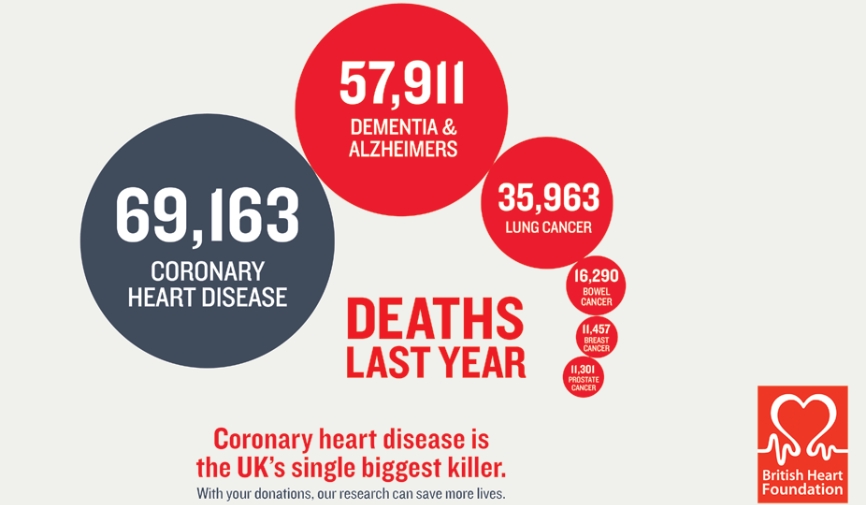Heart disease is a prevalent and serious health condition that affects millions of people worldwide. It encompasses a range of conditions that impact the heart’s structure and function, including coronary artery disease, heart failure, and arrhythmias. Heart disease is a leading cause of death globally, making it crucial to recognise its signs and symptoms early on.
Here, we will explore how to spot the signs of heart disease and why it is essential to be proactive in identifying them. By understanding the early warning signs, individuals can seek timely medical attention and take steps to reduce their risk of developing heart disease.
We’ll explore the common symptoms and signs of heart disease and discuss how they may differ between men and women. Additionally, we will explore the various risk factors associated with heart disease, from lifestyle choices to genetic predispositions. Recognising these risk factors is key to implementing preventive measures and maintaining heart health.
Image Source: BHF
What Do We Mean by Heart Disease?
Heart disease, often referred to as cardiovascular disease, is a broad term used to describe a range of conditions that affect the heart’s structure and function. It includes diseases such as coronary artery disease, heart failure, arrhythmias, and heart valve problems.
The impact of heart disease on overall health can be profound. It can lead to a reduced quality of life, disability, and even premature death. Moreover, heart disease often goes undetected until it’s too late, making early recognition and intervention critical.
It’s important to understand that anyone can develop heart disease, but certain factors significantly increase the risk. These include age, sex, family history, smoking, poor diet, lack of physical activity, obesity, high blood pressure, high cholesterol levels, diabetes, and excessive alcohol consumption.
Recognising Early Signs
The early stages of heart disease often don’t present with symptoms, which is why it’s commonly referred to as the “silent killer.” However, as the disease progresses, it may start to reveal certain warning signs. Recognising these warning signs and symptoms of heart disease can be lifesaving.
Common symptoms and signs of heart disease include chest discomfort or pain, shortness of breath, palpitations, weakness or dizziness, nausea, and sweating. It’s important to note that these symptoms can vary depending on the type of heart disease and the individual’s overall health status.
Interestingly, men and women may experience different symptoms. Men are more likely to have chest pain, while women might experience other symptoms, such as extreme fatigue, nausea, and shortness of breath. Women may also have symptoms while at rest or even when sleeping, unlike men, whose symptoms often occur with physical activity.
Although these symptoms can be alarming, they provide crucial information about your heart health. If you or someone else experiences any of these symptoms, it’s important to seek immediate medical attention.
Keep in mind that early detection and treatment of heart disease can significantly improve the prognosis and quality of life.
Risk Factors for Heart Disease
Understanding the risk factors for heart disease is crucial in preventing its onset and progression. Some risk factors are unavoidable, such as age, gender, and family history. As you get older, your risk of heart disease increases. Men are generally at higher risk than women, and having a close family member with heart disease can raise your risk.
However, many other risk factors are within your control. Lifestyle choices significantly impact your heart health. Smoking, for instance, is one of the most significant risk factors for heart disease. It damages the lining of your arteries, leading to a build-up of fatty material that narrows the artery.
Poor diet, lack of physical activity, and obesity also contribute to heart disease risk. A diet high in saturated fat, trans fat, and cholesterol can raise your blood cholesterol levels, while physical inactivity can lead to high blood pressure and obesity.
Being overweight or obese increases your risk because it’s linked with other heart disease risk factors, like high blood cholesterol and triglyceride levels, high blood pressure, and diabetes. Excessive alcohol consumption and uncontrolled stress or anger can also increase your risk of heart disease.
Lifesaving Equipment from WEL Medical
At WEL Medical, we’re passionate about saving lives and strengthening the chain of survival. We’re proud to be industry leaders in lifesaving equipment, including IPAD Defibrillators and Brayden CPR Manikins. Our cutting-edge devices are designed with the highest standards, ensuring you have the most reliable equipment when it matters most.
But we believe that having the right tools is just the first step. That’s why we’re dedicated to spreading vital information through our news page on how to use these lifesaving devices effectively. We understand that knowledge is power, especially when it comes to emergency situations where every second counts.
So join us in our mission to save lives. Whether you’re a healthcare professional looking for reliable equipment, an organisation wanting to improve its emergency preparedness, or an individual seeking lifesaving advice, WEL Medical is here for you. Together, we can make a difference and create a safer world.
Visit our website to learn more and explore our range of products, or reach out to our knowledgeable team for a more detailed conversation about strengthening the chain of survival in your own community.








